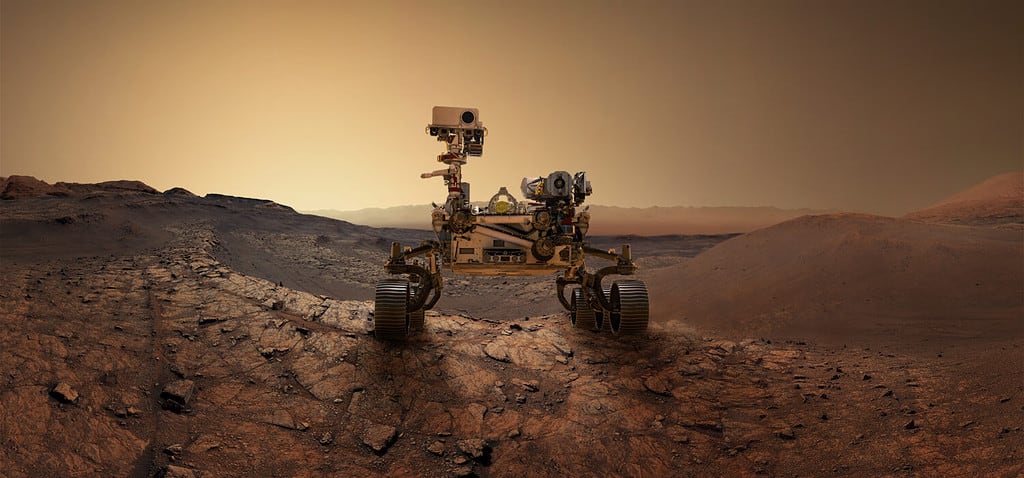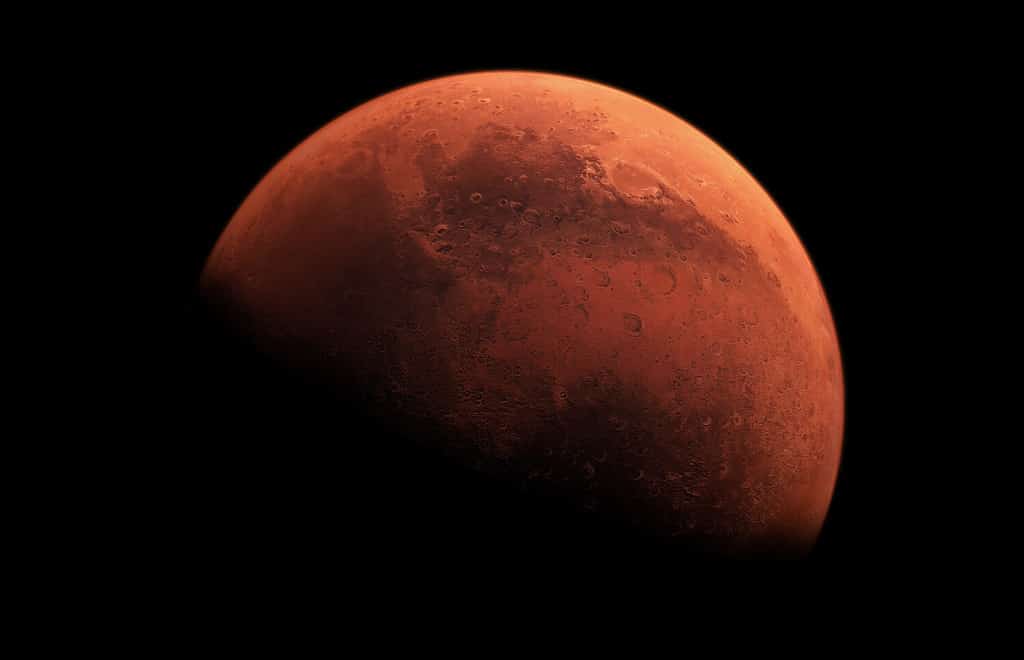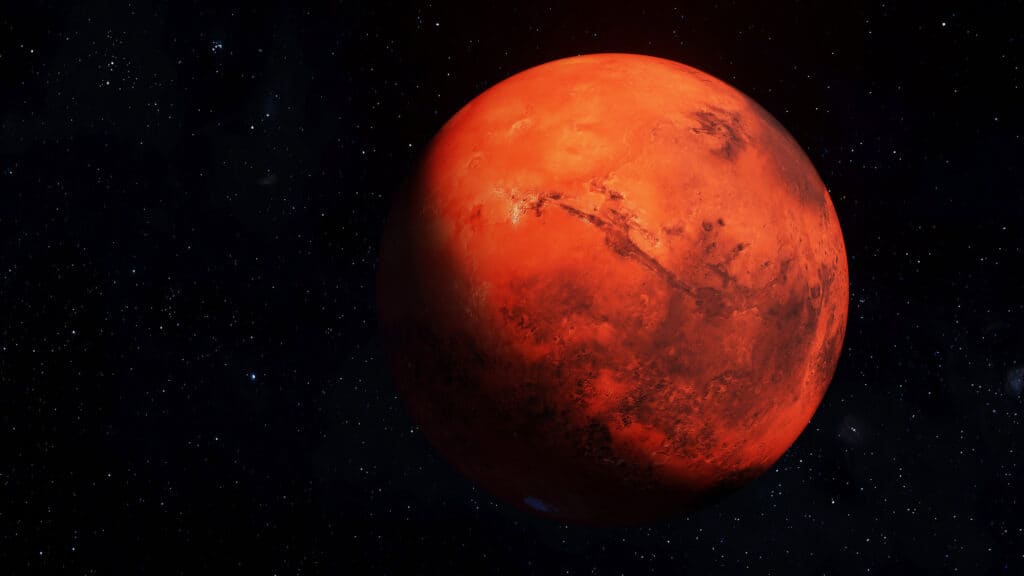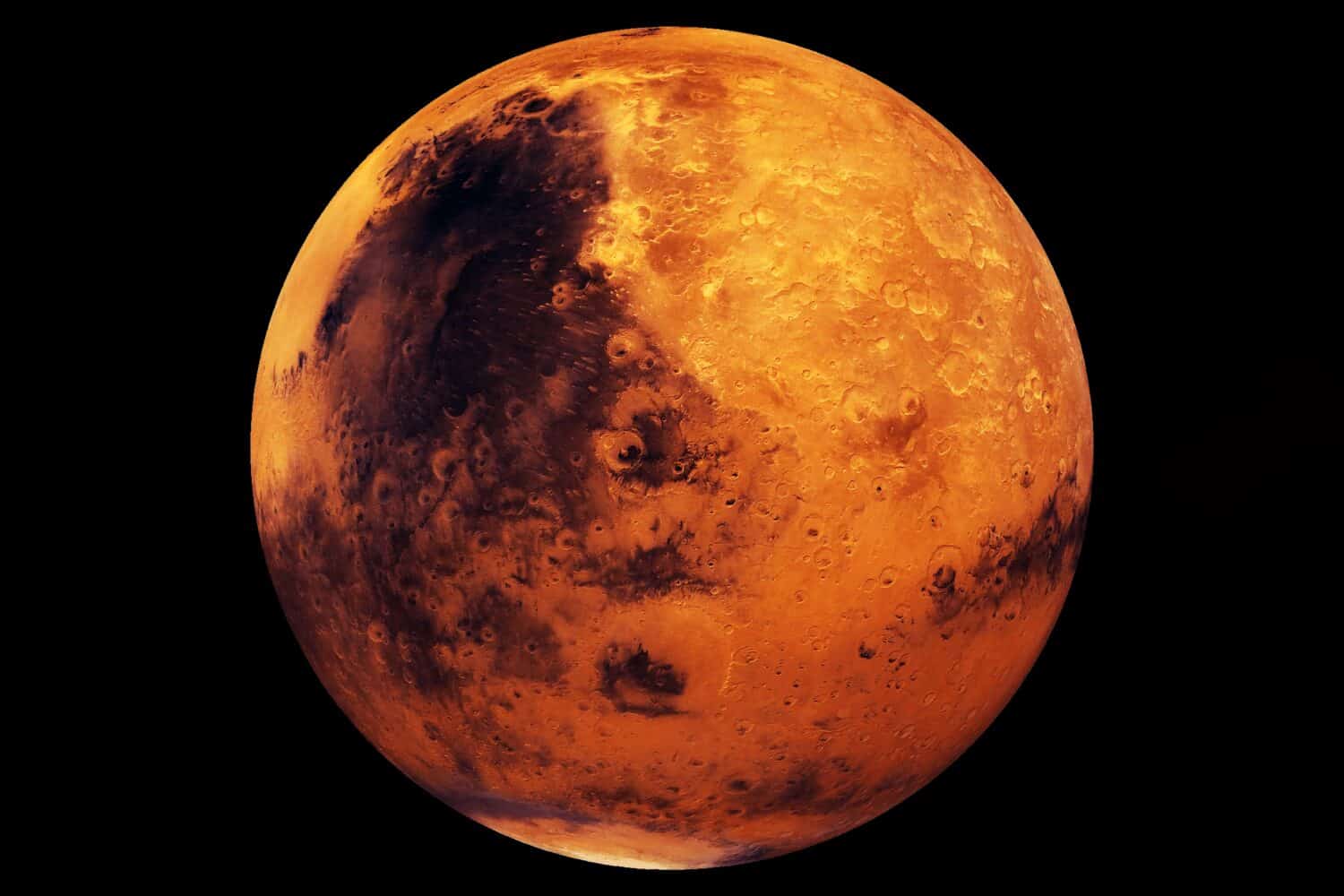Mars, also called the Red Planet because of the rusty iron in its soil, is one of the most interesting planets to study. The planet is the easiest to spot from Earth, appearing bright and large in comparison to other planets — likely because it is the closest planet to Earth. Since it’s one of the most explored planets in our solar system, many have wondered about the population on Mars.
Similar to Earth, Mars features volcanoes, polar ice caps, dirt, thin clouds, hillsides, and different weather patterns. However, it is much colder — but is it too cold for survival? Read on to learn about the population on Mars — and five other intriguing facts about the Red Planet.
1. Mars Has a Population of Zero
As you probably guessed, there is no known life on Mars. However, if you count robots like rovers and landers, that answer would change. NASA has sent space vehicles to study Mars and gather information.
Some people believe there used to be life on Mars before it became too cold and inhabitable. In fact, if this was the case, those living organisms likely caused their own extinction by contributing to dangerous changes in the atmosphere.
Again, there is no proof that life ever existed on Mars — and that remains true to this day. However, we are continuing to study the planet and its history and future.

NASA has been studying Mars since the 1960s.
©Triff/Shutterstock.com
2. Mars Is the Fourth Planet from the Sun
Between Mars and the Sun lies Mercury (closest to the Sun), Venus, and Earth — in that order. Mars is the furthest terrestrial planet (containing a compact and rocky surface like Earth) from the Sun, with 1.5 astronomical units between the two. That’s 142 million miles (228 million kilometers).
Many believe Mars is hot because of its red coloring, but really, as the fourth planet from the Sun, it’s actually quite cold — too cold for any known living organism to thrive there, with a mean temperature of -85 degrees Fahrenheit. For reference, Earth’s mean temperature is 59 degrees Fahrenheit.

The solar system consists of the Sun, Mercury, Venus, Earth, Mars, Jupiter, Saturn, Uranus, Neptune, and Pluto.
©19 STUDIO/Shutterstock.com
3. Mars Has Two Moons
You read that right — Mars has two different moons, which experts believe are captured asteroids. The moons, named Phobos and Deimos, orbit Mars at different rates. They’re both irregularly shaped — similar to that of a potato.
Phobos, the larger moon, is 13.8 miles and orbits Mars three times a day; Deimos, the smaller moon, is 7.8 miles and orbits Mars every 30 hours. Phobos is much closer to Mars (6,000 km above the planet) than Phobos and gets six feet closer every hundred years. On the other hand, Deimos is 23,458 km away from the planet.

Mars’s two moons are called Phobos and Deimos.
©bhcvn/Shutterstock.com
4. Mars Is About Half the Size of Earth
Mars has a radius of 2,106 miles (3,390 kilometers), making it about half the size of Earth, which is 3,958.8 miles. According to NASA, Earth’s moon is about half the size of Mars — or one-fourth the size of Earth. Additionally, it would take over six Mars volumes to fill Earth’s volume.

Mars is only twice as large as Earth’s moon.
©Nazarii_Neshcherenskyi/Shutterstock.com
5. You Would Weigh Less on Mars than You Do on Earth
According to NASA, if you weigh 100 lbs on Earth, you’d weigh only 38 lbs on Mars — or 38% of your weight. This is because there’s less gravity on Mars than on Earth.
Sir Isaac Newton coined this formula for determining your weight: F=Gmm/r2, with M being the mass of the planet, m being your mass, and r being the distance between you and the planet’s center. Since Mars’s mass is 11% less than Earth’s mass, it makes sense why you’d weigh less there. Additionally, Mars has about 15% of Earth’s volume and is not perfectly spherical, with an equatorial diameter of 4,222 miles (6,794 km). From pole to pole, Mars has a diameter of 4,196 miles (6,752 km) — significantly lower than Earth’s parameters.

Mars has less mass than Earth, making its surface gravity much lower.
©WR Studios/Shutterstock.com
6. There Are 687 Days in a Year on Mars
Mar’s year is almost twice the amount of days as Earth’s 365. This is because Mars has a speed (velocity relative to the sun) of 53,858 mph, while Earth’s speed is 66,622 mph.
Earth and Mars have similar tilt degrees, meaning Mars has seasons just like Earth. However, because Mars’s year is almost twice as long as Earth’s, its seasons last much longer than our four seasons. Depending on the hemisphere on Mars, some seasons are longer than others. Mars’s day is only 40 minutes longer than Earth’s.

While Mars has the same hours in a day as Earth, its years are almost twice as long.
©iStock.com/Cobalt88
Thank you for reading! Have some feedback for us? Contact the AZ Animals editorial team.








